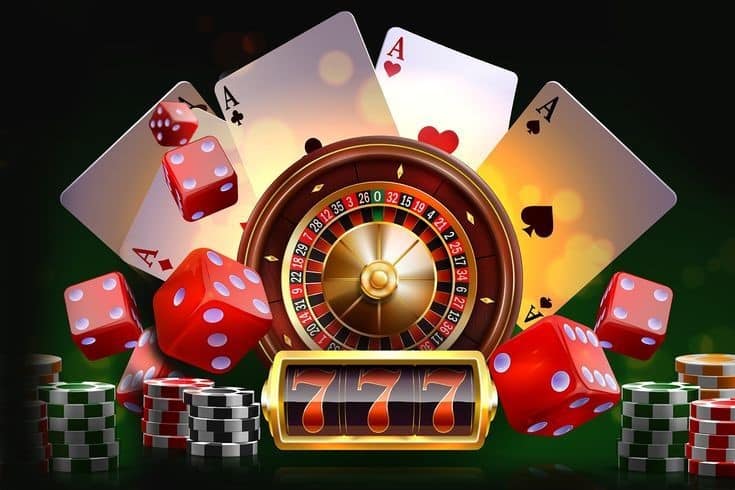
Gambling games have long captivated the human imagination, drawing gamblers into a universe filled with fortune, strategy, and the allure of adventure. Each activity is meticulously crafted not just for fun, but also to inspire specific emotional responses that keep gamblers involved and invested. Understanding the drives behind these designs reveals much about how psychology plays a vital role in the gaming experience.
From the dazzling lights and vibrant sounds to the complex layering of guidelines and rewards, casino games are designed to create an atmosphere of thrill and eagerness. Game designers leverage behavioral strategies to influence gambler behavior, whether through the use of winning opportunities, near-miss scenarios, or social interactivity. By examining these factors, we can better appreciate how casino games fulfill not just a need for entertainment, but more profound psychological needs for adventure and hazard.
Grasping Player Actions
Casino games are engineered with a profound understanding of player psychology, which is essential for luring and keeping players. The thrill of the game, combined with the hope of winning, creates a powerful draw. Game designers employ elements like sonic elements, colorful graphics, and engaging gameplay to seize attention and generate emotional responses. These sensory effects enhance the total environment, making players feel more involved in the game.
Another important aspect of player behavior is the idea of risk and reward. Casino games often balance risky situations with the potential for substantial rewards, which can lead to the occurrence known as near-miss phenomenon. When players come close to winning, the brain produces dopamine, reinforcing their behavior and prompting them to keep playing in pursuit of that hard-to-reach win. This cycle of wish and frustration plays a crucial role in how games are constructed and promoted.
Lastly, social factors also play a central role in player behavior at casinos. Many games are designed to be played in teams or in company with other players, fostering a sense of belonging and communal experience. The social interaction inherent in games like poker enhances enjoyment and can culminate in longer play sessions. Designers leverage on this by designing environments that prompt players to stay, interact, and revisit, making the overall casino experience more attractive.
The Role of Imagery and Audio
Visuals and audio play a vital role in improving the gambler’s experience within casino games. Designers utilize bright colors, eye-catching graphics, and captivating animations to capture gambler’s attention and sustain their interest. no ID verification casino The use of motifs, such as exploration or opulence, helps create an engaging atmosphere that transports players into a different world. By connecting to the senses, these elements add to a intensified emotional response, prompting players to engage more deeply with the games.
Audio design is equally important in enhancing the overall experience of gambling games. The mix of ambient music, sound effects for winning combinations, and ambient noises creates an sound landscape that holds players enthralled. Audio cues associated with victories, such as ringing bells or festive music, evoke feelings of thrill and satisfaction, encouraging players to keep playing. These audio cues are carefully placed to amplify the thrill of the game and create a more immersive experience.
Moreover, the synchronization of visuals and audio is important for reinforcing the game’s overall concept and atmosphere. Each element should coordinate harmoniously to create a cohesive experience that pulls players in. The effective use of this integration not only enhances user satisfaction but also boosts the likelihood of return play, as players become more engaged in the immersive world that the casino games offer. This thoughtful combination of imagery and sound ultimately enhances player involvement and loyalty.
Incentive Structures and Participation
The design of casino games greatly depends on incentive structures to ensure participants involved and coming back for additional experiences. These systems are based in behavioral theories that take advantage of human behavior and motivation. Participants are often driven by the excitement of winning, which is supported by immediate feedback through the game’s design. This prompt satisfaction not only enhances the overall experience but also cultivates a sense of success, encouraging participants to keep playing in hopes of greater rewards.
Gaming establishments implement various incentive systems, including jackpots, extra rewards, and increased rewards, to engage participants. These elements create a level of thrill that sustains interest. Additionally, the unpredictability of results plays a significant role in keeping interest. The variable reward system, where successes are unpredictable but occur often enough, maintains participants on edge and driven to keep playing. This cycle of anticipation and anticipation is foundational to the effectiveness of gambling experiences.
In addition, community aspects, such as tournaments and collaborative options, enhance the participation factor by leveraging the competitive nature of participants. The shared experience of gaming with fellow participants can amplify the thrill of winning and create a community atmosphere within the casino. By combining these community elements with efficient incentive structures, gambling experiences not only provide entertainment but also nurture a stronger bond among participants, reinforcing their commitment to the gaming experience.
